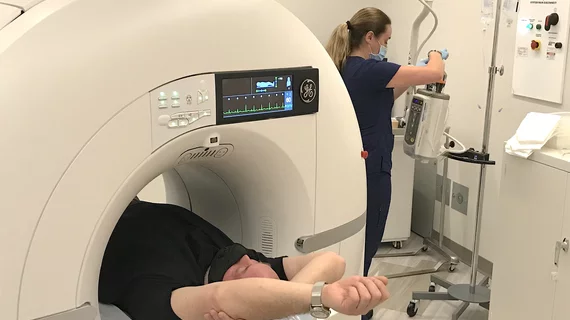Addressing contrast media shortage in the short, mid and long term
As institutions across the country are scrambling to adapt their imaging services in the middle of an emergent shortage of iodinated contrast media, experts in the field are offering framework to address the situation.
A special report published in Radiology offers operational counsel to departments that are struggling with the shortage on how to deal with contrast supply dilemmas in the short, mid and long term.
“We are facing issues similar to those we faced in the early days of the COVID-19 pandemic, caused by a limited supply of an important pharmaceutical, critical to our ability to care for our patients,” said Thomas M. Grist, MD, chair of the Department of Radiology at the University of Wisconsin School of Medicine and Public Health in Madison and lead author of the Radiology Special Report. “One important difference, however, is that our hospitals and health systems are more adept at establishing incident command centers to implement rapid responses to the challenges we face and communicating those changes to our patients and referring physicians.”
In the report, Grist and colleagues suggest departments’ immediate response to the shortage should include establishing an incident command center with a designated team to monitor contrast supplies and usage. Imaging schedules should also be assessed to determine which elective exams can be delayed and which cannot, in addition to exploring the use of alternative modalities that do not require the use of Iohexol.
For the months to come, the report suggests strategies in line with those that have recently been recommended by the ACR, including repackaging larger doses into smaller vials and assessing doses based on patient weight, clinical indications and kVp levels for each exam. In addition, Grist notes that there should be constant communication between departments and ordering providers to ensure compliance with mitigation strategies.
Long term, authors of the report indicate that legislation advocating for contrast manufacturing plans might be necessary in the U.S., as well as expanding production at plants that currently produce the product. Stockpiling supplies in preparation for unforeseen events is also recommended.
“It is too easy for us to take for granted the readily available supply of something that is so important to our patients and our radiologic practices until it’s gone,” Grist said. “We need to commit to changing the supply chain so that a single event in a faraway country does not put us in this predicament again. We owe it to our patients who trust us with their lives and well-being every day of the year.”
The full list of detailed mitigation strategies, including charts on specific exams and dosing, can be found here.
Related contrast shortage news:
Preserving contrast media supplies: 7 ACR recommendations
GE provides update on contrast media shortage
Be prepared: IV contrast media shortage could last up to 8 weeks
Reference:
“Short-, Mid-, and Long-Term Strategies to Manage the Shortage of Iohexol,” Thomas M. Grist, Cheri L. Canon, Elliot K. Fishman, Maureen P. Kohi, and Mahmud Mossa-Basha. Radiology.

